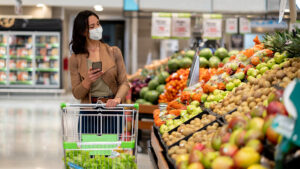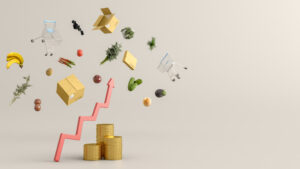The food and beverage industry is coming to life, invigorated by healthy eating, convenience, technology and brands with purpose. These are the trends that will shape the future of food.
#1 Direct to Consumer & Online Shopping
The sale of online groceries more than tripled between 2013 and 2018; however, it still only represents 2 percent of total grocery spending … but not for long. Research by Packaged Facts forecasts that between 2018 and 2023 online grocery sales will more than quadruple. Nielsen projects that 20 percent of all U.S. grocery sales will be online by 2025. This means that $1 out of every $5 for food will be spent online, says Don Goodwin, founder of Golden Sun Marketing.
#2 Retail Technology
Because of the technology used today, companies are able to know your every move. That collective information has the potential to reshape how retailers market to you substantially, Goodwin says. Convenience products are secondary to the equation here, he says, adding that it’s really about knowing precisely how you shop so they can market directly to you. Looking at this in a positive light, this technology could help deliver the best value in products.
#3 The New Consumers
There are two new consumers that have been classified: chief health officers and young forevers. Chief health officers comprise about one-fifth of the population and are the label-reading, family-focused health managers. The young forevers are basically millennials who are concerned about themselves and their health. They represent 23 percent of the population, are impulse brand switchers and are not concerned with price.
#4 Snacking is Hot
Snacking is the fastest growing meal occasion, and there’s a shift to wellbeing with a focus on portion control. This is emphasized by compressed schedules and bifurcation in income distribution. Goodwin explains that snacking is an impulse buy, and companies are still trying to figure out how snacking fits into the retail experience. “How do you effectively buy a snack in a digital environment?” he asks.
#5 Pro-Environment
Waste not, want not: Food waste and food injustice are becoming focal points. Some groceries are now selling ugly produce. There’s also an emerging story that farmers aren’t taking care of the land. “We need to be able to talk about what we are doing to care for the land,” Goodwin says. “This is one issue we need to get in front of.” While the agriculture sector has been talking about the 9.5 billion by 2050, it’s starting to move mainstream and people are starting to think “how do we address this?”
#6 Brands with a Purpose
Putting a face on our food system, consumers are willing to pay more. Many brands are aligning with social causes that have a clear purpose and act in the best interests of society. It’s not just having a charity on your website, but the cause is centric to the brand itself.
#7 Urban Agriculture
Fifty percent of all leaf lettuce will be grown in some urban agriculture solution by 2030. Private equity is bringing in billions of dollars. This space is absolutely exploding! Businesses and entrepreneurs are starting to get serious. People are moving projects forward: greenhouse technology, aquaponics, hydroponics, converted warehouses, vertical farming and micro-farming can all disrupt the traditional fresh market chain.













